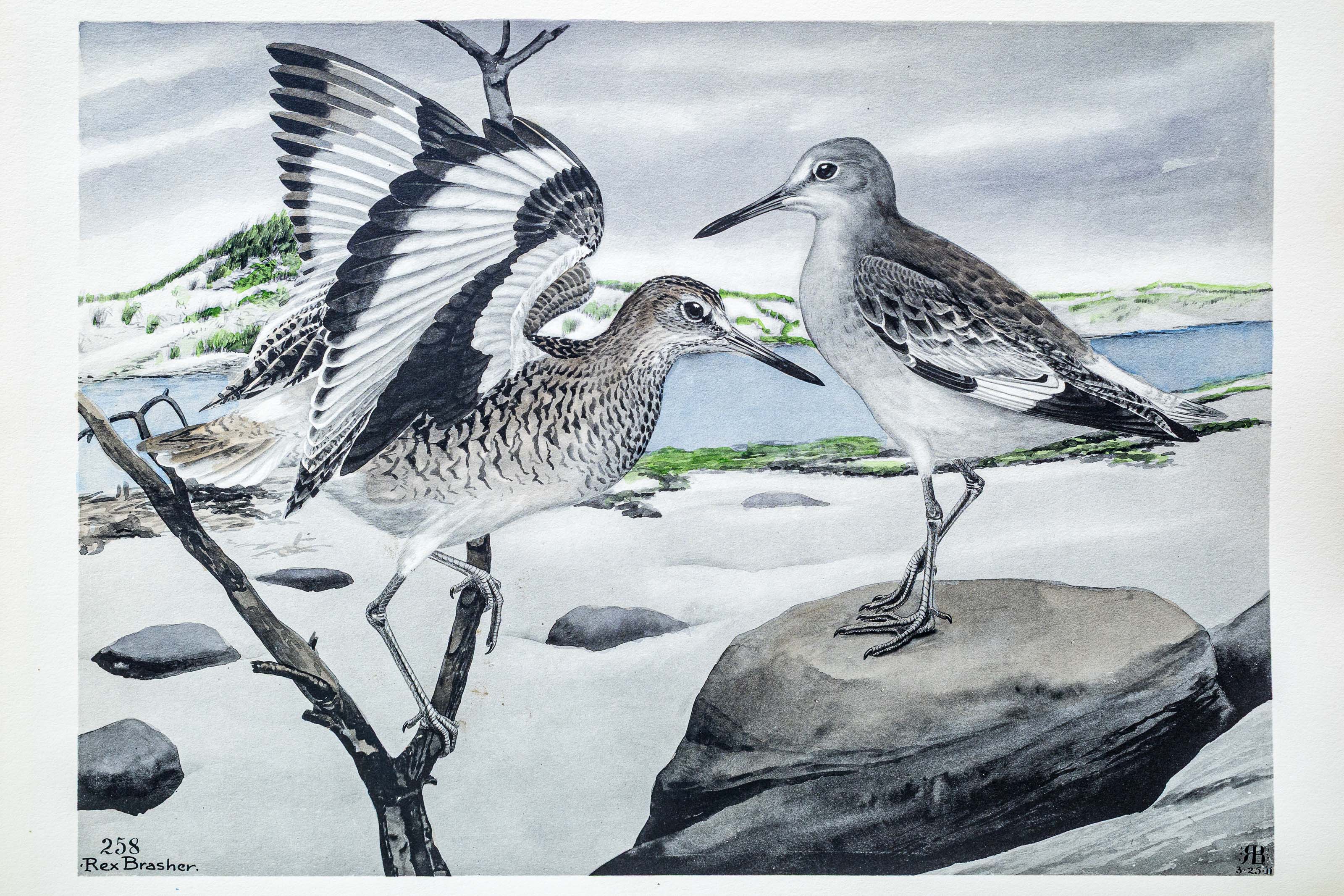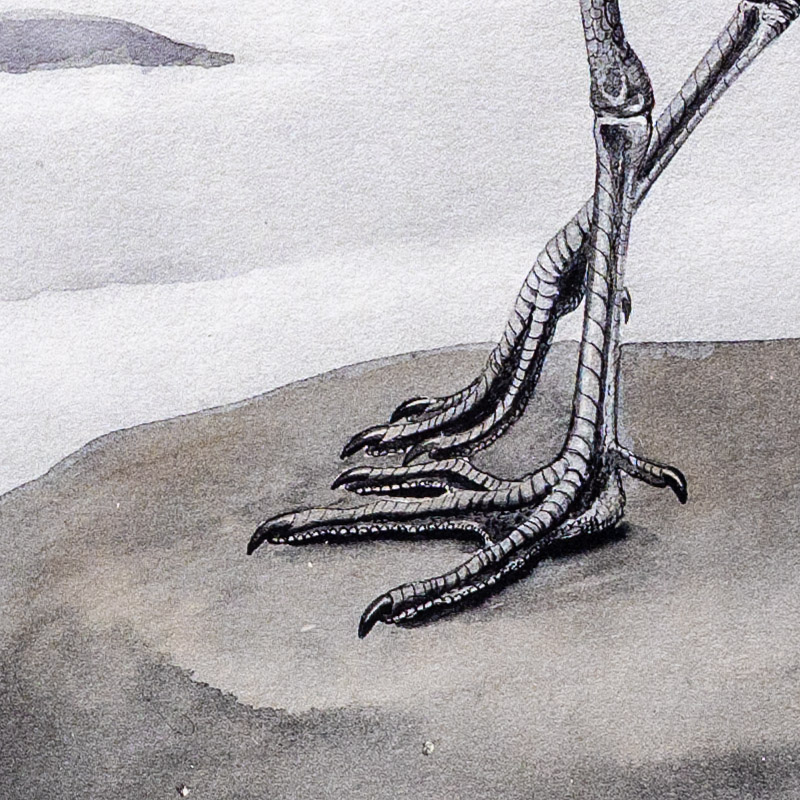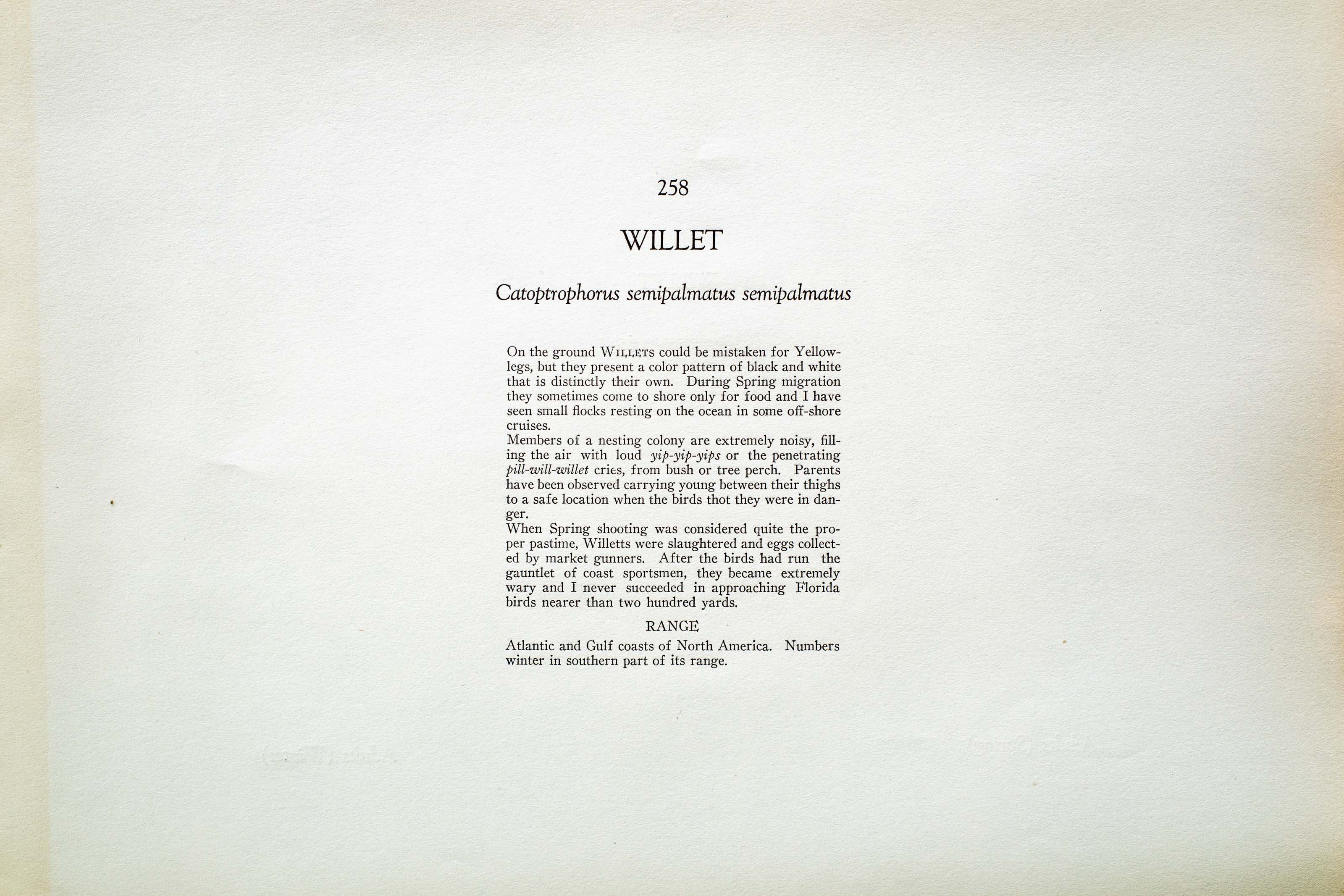






1911
1930
4
258
A team of dedicated board members, volunteers, and student interns has published every page in Volume 9. This volume includes 360 images of paintings and lyrical descriptions of birds, now available online for everyone to enjoy anywhere in the world. This is a monumental task. Each volume requires approximately 400 hours to photograph, edit, transcribe, catalog, and publish online. We need your support to complete this work.
If you're tech-savvy, have a good eye, are meticulous with details, and love structured data, please consider volunteering by emailing us at hello@rexbrasher.org.
We encourage all bird lovers and supporters to consider a monetary donation to support our mission to make Rex's work available for everyone. You can provide a one-time or recurring donation online.
On the ground WILLETS could be mistaken for Yellowlegs, but they present a color pattern of black and white that is distinctly their own. During Spring migration they sometimes come to shore only for food and I have seen small flocks resting on the ocean in some off-shore cruises.
Members of a nesting colony are extremely noisy, filling the air with loud yip-yip-yips or the penetrating pill-will-willet cries, from bush or tree perch. Parents have been observed carrying young between their thighs to a safe location when the birds thot they were in danger.
When Spring shooting was considered quite the proper pastime, Willets were slaughtered and eggs collected by market gunners. After the birds had run the gauntlet of coast sportsmen, they became extremely wary and I never succeeded in approaching Florida birds nearer than two hundred yards.
Atlantic and Gulf coasts of North America. Numbers winter in southern part of its range.